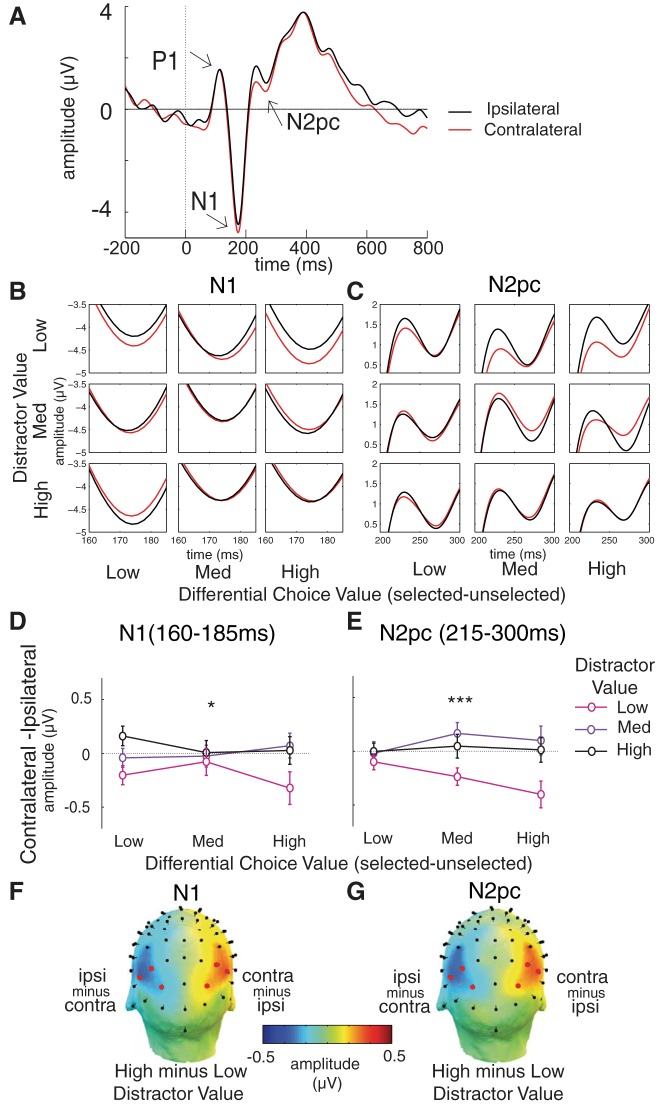Fig. 4.
Distractor value reduces the amplitudes of lateralized event-related potentials (ERPs). A: averaged stimulus-locked posterior-occipital ERPs contralateral to selected (red) and unselected (black) choice stimuli in the condition with high differential choice value but low distractor value. B and C: zoomed-in view of lateralized N1 and N2pc components plotted as a function of differential choice value and distractor value. D and E: mean amplitude difference of the lateralized ERPs across the N1 and N2pc windows, plotted as a function of differential choice value and distractor value. Overall, the amplitude difference of the early N1 and attention-shift-related N2pc components decreases (became less negative) as distractor value increases. F and G: topographical maps of the lateralized N1 contralateral-minus-ipsilateral difference and the N2pc contralateral-minus-ipsilateral difference between the high and low distractor value conditions (shown in the right hemisphere of the head model; the left hemisphere is the mirror image of the right hemisphere with the opposite sign). The effect of distractor value on these 2 components is maximal at the lateral posterior-occipital and posterior electrodes (red circles). Error bars represent within-subject SE. *,***Significant main effects of distractor value (P < 0.05 and P < 0.001, respectively).

